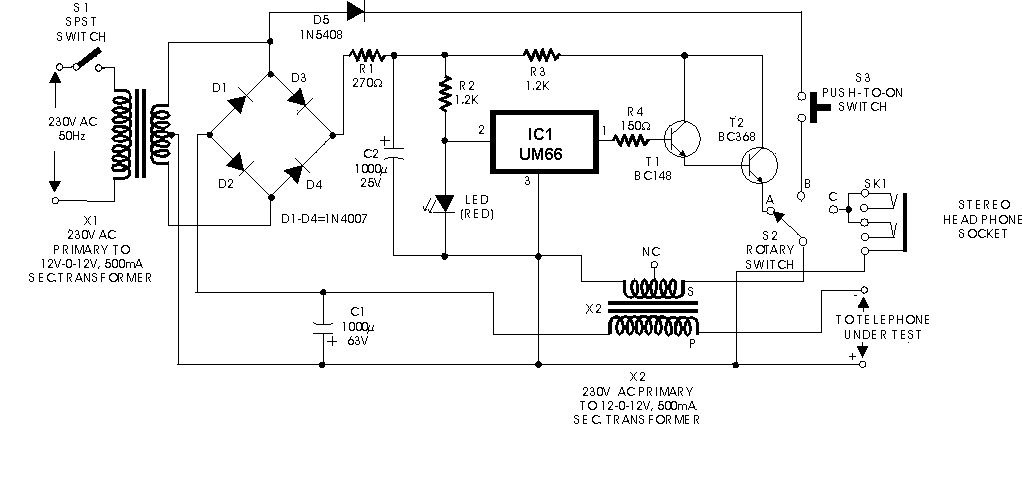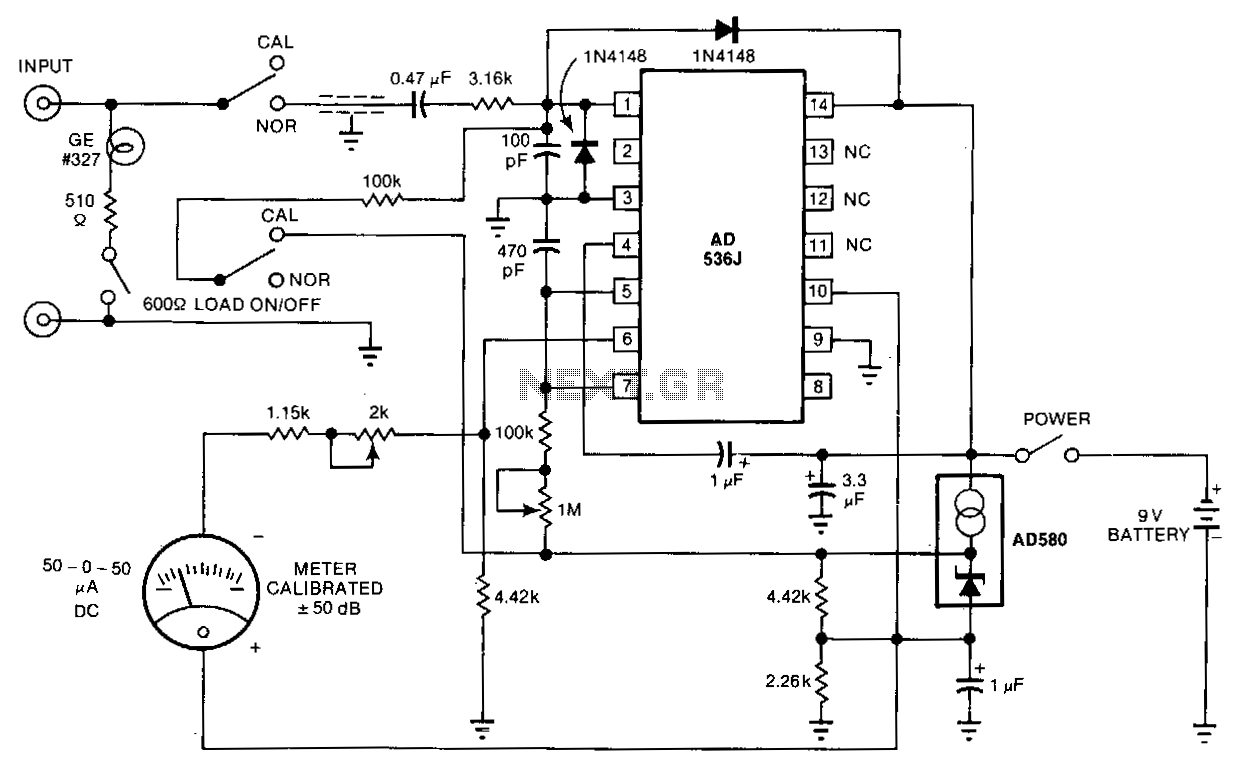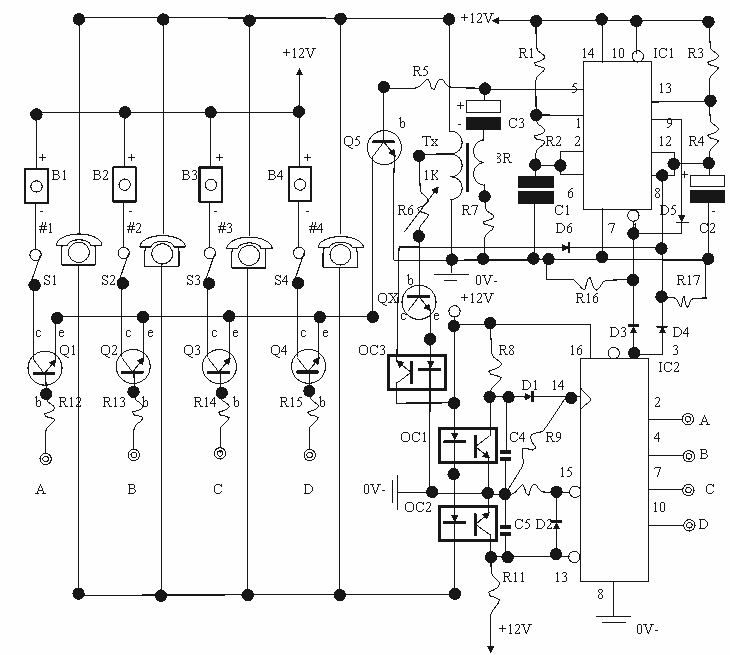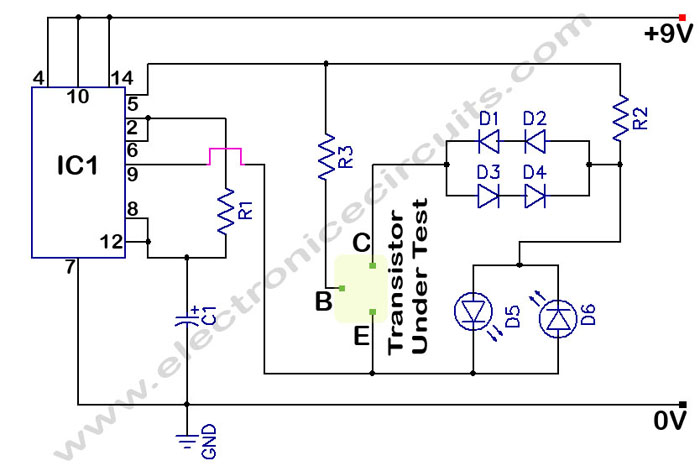
Off line Telephone tester

Offline telephone tester. This circuit allows for testing a telephone instrument without the need for a telephone line. The design is straightforward.
The offline telephone tester circuit is designed to evaluate the functionality of telephone instruments independently of an active telephone line. This is particularly useful for troubleshooting and verifying the operational status of phones in environments where a telephone line is not accessible or available.
The core components of the circuit typically include a power source, a series of resistors, capacitors, and a basic audio signal generator. The power source can be a battery or a DC power supply that provides the necessary voltage for the circuit to operate. The audio signal generator produces a tone that simulates the ringing or dialing sound of an actual phone line, allowing the user to test the audio output of the telephone instrument.
Resistors are strategically placed to limit current and protect sensitive components within the circuit. Capacitors may be used to filter signals and stabilize the power supply, ensuring that the audio signal remains clear and free of noise.
The circuit may also incorporate a simple LED indicator to provide visual feedback when the telephone instrument is connected and operational. This can help users quickly identify whether the phone is functioning properly or if further troubleshooting is required.
Overall, the offline telephone tester circuit is a valuable tool for technicians and hobbyists alike, enabling efficient testing of telephone instruments without reliance on external telephone lines. Its simplicity and effectiveness make it an essential addition to any electronics toolkit.Off line Telephone tester. Here is a circuit of an off-line telephone tester which does not require any telephone line for testing a telephone instrument. The circuit is so simple that. 🔗 External reference
The offline telephone tester circuit is designed to evaluate the functionality of telephone instruments independently of an active telephone line. This is particularly useful for troubleshooting and verifying the operational status of phones in environments where a telephone line is not accessible or available.
The core components of the circuit typically include a power source, a series of resistors, capacitors, and a basic audio signal generator. The power source can be a battery or a DC power supply that provides the necessary voltage for the circuit to operate. The audio signal generator produces a tone that simulates the ringing or dialing sound of an actual phone line, allowing the user to test the audio output of the telephone instrument.
Resistors are strategically placed to limit current and protect sensitive components within the circuit. Capacitors may be used to filter signals and stabilize the power supply, ensuring that the audio signal remains clear and free of noise.
The circuit may also incorporate a simple LED indicator to provide visual feedback when the telephone instrument is connected and operational. This can help users quickly identify whether the phone is functioning properly or if further troubleshooting is required.
Overall, the offline telephone tester circuit is a valuable tool for technicians and hobbyists alike, enabling efficient testing of telephone instruments without reliance on external telephone lines. Its simplicity and effectiveness make it an essential addition to any electronics toolkit.Off line Telephone tester. Here is a circuit of an off-line telephone tester which does not require any telephone line for testing a telephone instrument. The circuit is so simple that. 🔗 External reference





